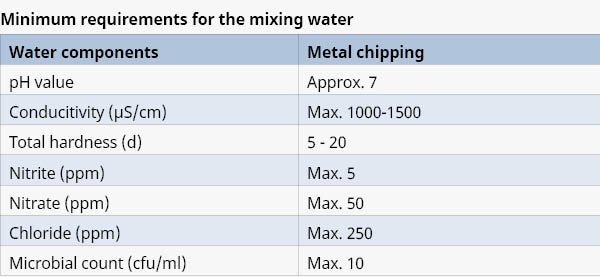7. Test your foam: Is it the problematic kind?
Foam formation in the cutting liquid is, in general, undesirable for several reasons:
- Foam does not lubricate well.
- Foam does not cool well.
- Foam decreases the filtration efficiency.
- Foam contributes to chemical odor and mist difficulties.
In short, foam decreases the efficiency of the cutting liquid and may lead to an overflow in the cutting machine or recirculation unit, finally causing a moist and unhealthy working environment.
2 types of foam: Mechanically and chemically related
There are basically two kinds of foam: The mechanically and chemically related foams. Mechanically related foam is less stable and will typically fall fast, thereby disappearing by itself without causing further problems.
Chemically related foam, on the other hand, will take a long time to disappear, which means challenges with too much foam and reduced cooling are created.
The 3-step bottle test
To test the stability of the foam in order to distinguish between mechanically and chemically related foam, a simple test can be performed. It is called a bottle test.
- Fill 50% of an empty bottle with cutting fluid.
- Shake it for 15 seconds and wait 30 seconds.
- Check the foam. If the generated foam is still stable, it indicates that the foam is chemically related, and it is recommended to change the cutting fluid.
Download guide




